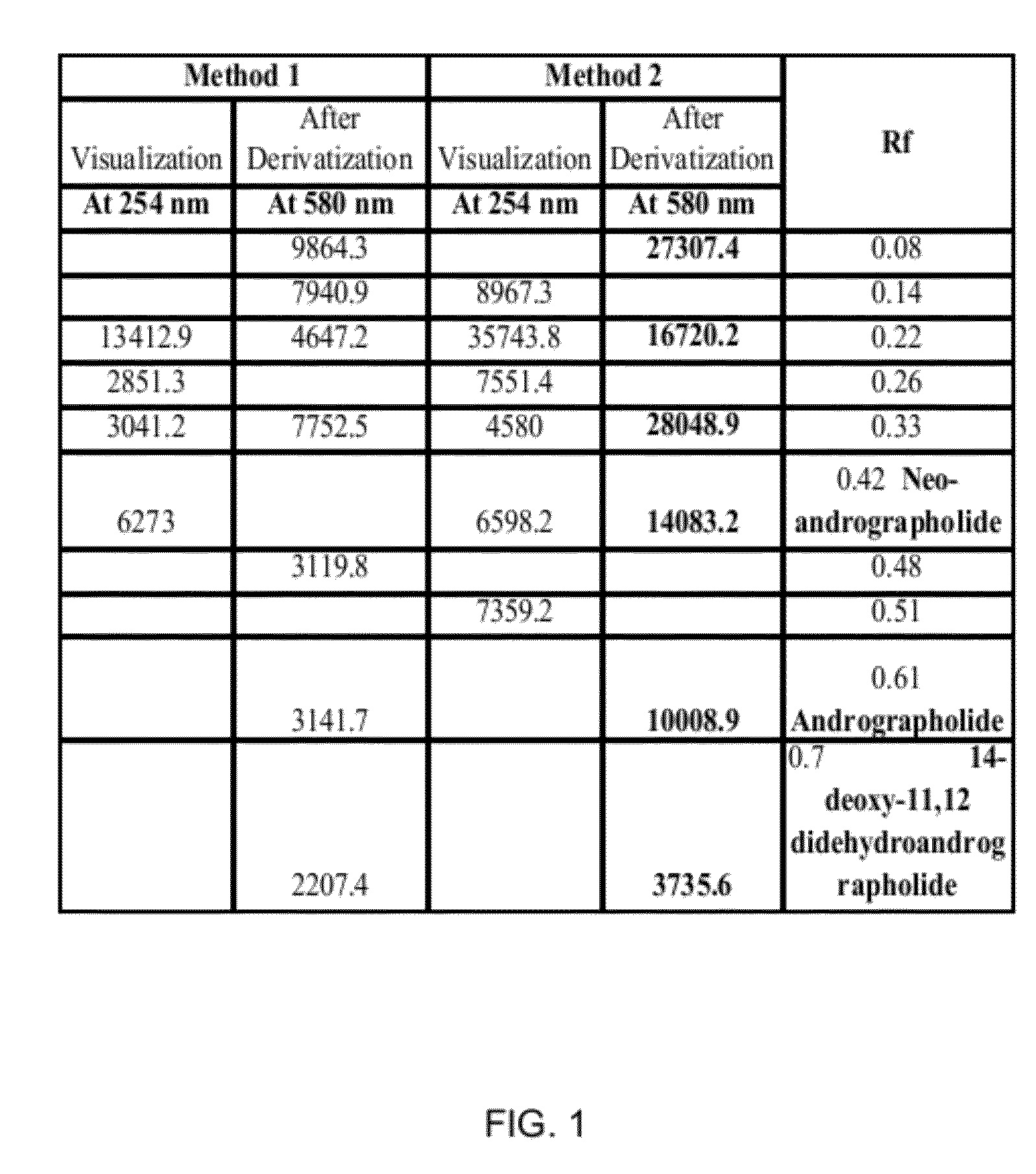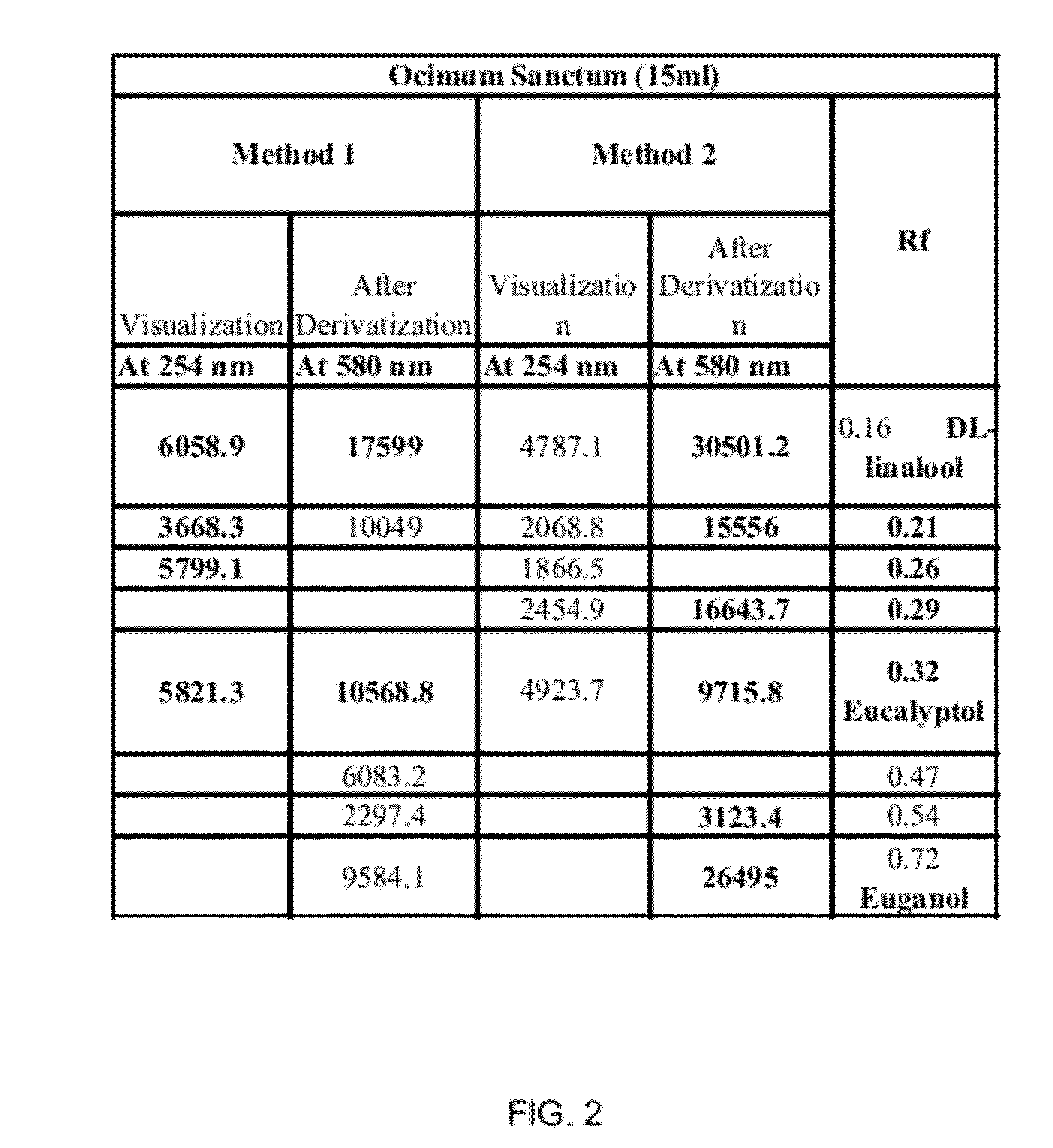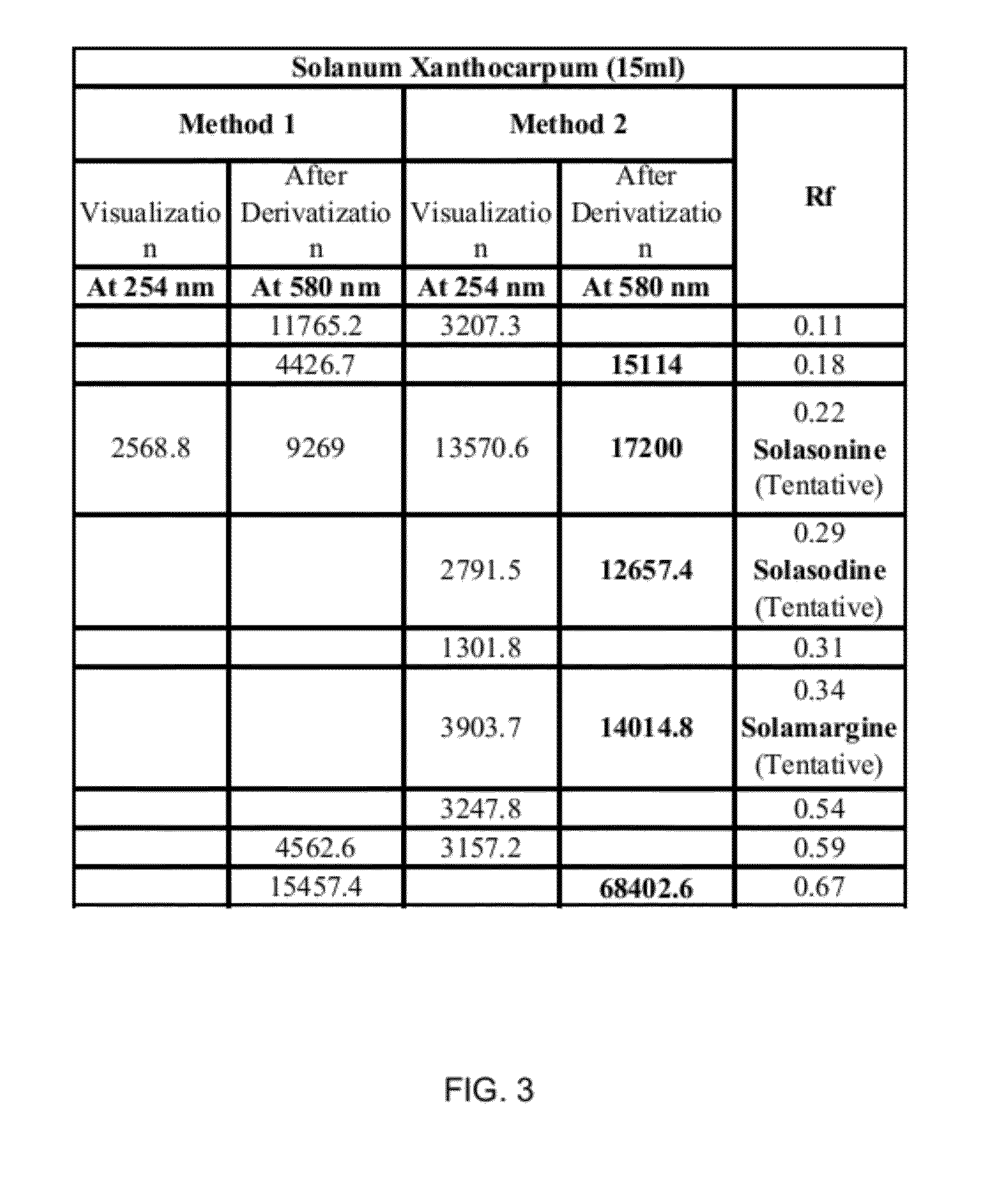Method for extraction of fractions containing pharmacologically active ingredients with less cytotoxicity from one or more plants
a technology of pharmacologically active ingredients and extracting fractions, which is applied in the direction of biocide, antibacterial agents, drug compositions, etc., can solve the problem of low production of secondary metabolites in plants
- Summary
- Abstract
- Description
- Claims
- Application Information
AI Technical Summary
Problems solved by technology
Method used
Image
Examples
example 1
[0051]Matured stems of the plant Andrographis paniculata were obtained from local herb supplier in Pune (India). Methanol, Chloroform and Hexane were of reagent grade and obtained from Merck (India). Water used was in-house distilled water. The matured stems of Andrographis paniculata were sun dried and then coarsely powdered. The coarse powder of the matured leaves of Andrographis paniculata (500 g) was allowed to soak in a mixture of 5 L of chloroform, 1.5 L of 60% methanol for 8 hours to 12 hours. The mixture was intermittently stirred. After 8 hours to 12 hours the mixture was filtered to obtain the first residue and the first filtrate.
[0052]The first filtrate was allowed to settle. The first filtrate once settled had two immiscible layers. The two immiscible layers included an aqueous methanol layer and a chloroform layer. The chloroform layer was separated out. Thereafter, the chloroform layer was concentrated on a rotary evaporator under reduced pressure and dried at 50° C. t...
example 2
[0054]Matured leaves of the plant Solanum xanthocarpum were obtained from local herb supplier in Pune (India). Methanol, Chloroform and Hexane were of reagent grade and obtained from Merck (India). Water used was in-house distilled water. The matured leaves of Solanum xanthocarpum were sun dried and then coarsely powdered. The coarse powder of the matured leaves of Solanum xanthocarpum (500 g) was allowed to soak in a mixture 5 L of chloroform, 1.5 L of 60% methanol for 8 hours to 12 hours. The mixture was intermittently stirred. After 8 hours to 12 hours, the mixture was filtered to obtain the first residue and the first filtrate.
[0055]The first filtrate was allowed to settle. The first filtrate once settled included two immiscible layers. The two immiscible layers included an aqueous methanol layer and a chloroform layer. The chloroform layer was separated. Thereafter, the chloroform layer was concentrated on a rotary evaporator under reduced pressure and dried at 50° C. to obtain...
example 3
[0057]The powder of dried stems of Andrographis paniculata was extracted using two methods, namely Method 1 and Method 2. For both the methods, the dried stems of Andrographis paniculata were obtained from local herbs supplier in Pune (India) and Methanol (reagent grade) was obtained from Merck (India). For Method 2, chloroform and hexane used were of reagent grade and were obtained from Merck (India). The water used in both the methods was in-house distilled water.
Method 1:
[0058]The coarse powder (500 g) of the dried stems of Andrographis paniculata was transferred to a 5 L flask. 4 L of methanol was added to the flask. The resultant mixture was stirred thoroughly and kept overnight (8 hours to 12 hours). The next day, the mixture was filtered to separate methanol-soluble fraction. The methanol-soluble fraction was then concentrated on a rotary evaporator under reduced pressure and dried at 50° C. to obtain the final extract i.e. the methanol-soluble extract.
Method 2:
[0059]The coar...
PUM
| Property | Measurement | Unit |
|---|---|---|
| Fraction | aaaaa | aaaaa |
| Fraction | aaaaa | aaaaa |
| Fraction | aaaaa | aaaaa |
Abstract
Description
Claims
Application Information
 Login to View More
Login to View More - R&D
- Intellectual Property
- Life Sciences
- Materials
- Tech Scout
- Unparalleled Data Quality
- Higher Quality Content
- 60% Fewer Hallucinations
Browse by: Latest US Patents, China's latest patents, Technical Efficacy Thesaurus, Application Domain, Technology Topic, Popular Technical Reports.
© 2025 PatSnap. All rights reserved.Legal|Privacy policy|Modern Slavery Act Transparency Statement|Sitemap|About US| Contact US: help@patsnap.com



